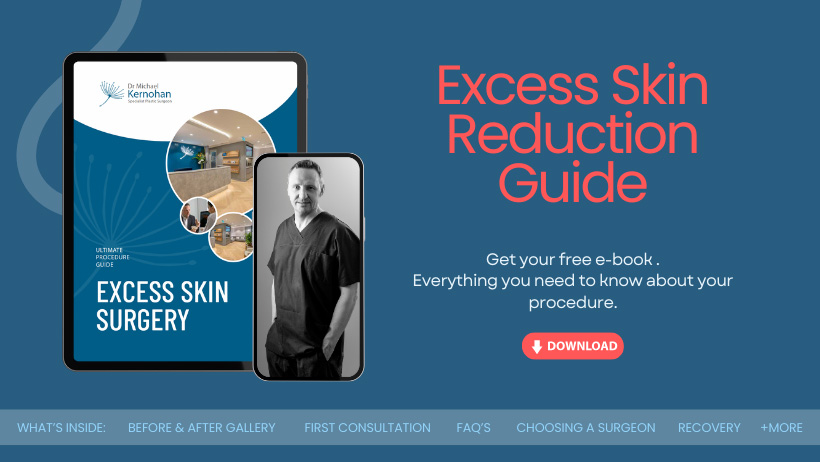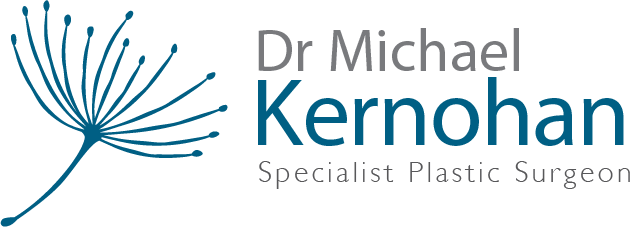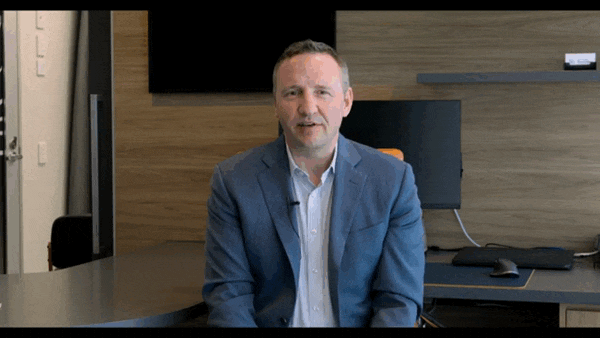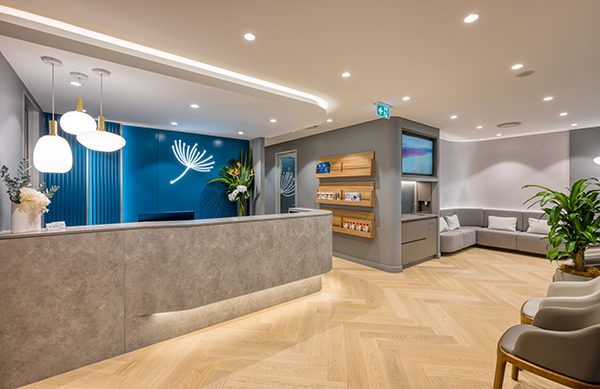MBS Item Numbers for Body Lift Surgery
Body lift, a complex surgical procedure, has raised numerous questions regarding its coverage under Medicare. The answer to whether this procedure can be claimed on Medicare isn’t straightforward. It involves a complex interplay of medical guidelines, individual circumstances, and specific Medicare policies.
In this blog, Sydney Specialist Plastic Surgeon Dr Michael Kernohan offers clarity and guidance on this important subject, ensuring you have the necessary insights to make informed decisions regarding your body lift surgery.
Take the Quiz
What Is Medicare Australia?
Medicare Australia, the foundation of the Australian healthcare system, ensures that all eligible residents have access to quality and affordable medical care. It’s crucial for you to understand both the history and purpose of Medicare Australia, as well as the breadth of services and coverage it provides.
History and Purpose of Medicare Australia
- Introduced in 1984, Medicare was established to provide equitable and universal access to healthcare for all Australian residents
- It evolved from previous healthcare schemes with the aim to reduce the financial burden of medical expenses on individuals and families
- The system operates under the principle that every Australian deserves access to quality healthcare regardless of their personal circumstances
General Services and Coverage Provided by Medicare Australia
- Offers broad coverage for essential healthcare services, which includes consultations with general practitioners and specialists
- Provides subsidies for a wide range of prescription medications under the Pharmaceutical Benefits Scheme (PBS)
- Includes the Medicare Safety Net, designed to protect high users of medical services from large cumulative costs
- Facilitates bulk billing, where the service provider bills Medicare directly, reducing or eliminating out-of-pocket expenses for the patient
- Supports access to public hospital services, offering free or subsidised treatment for public patients
- Covers a range of diagnostic services, including blood tests and X-rays, ensuring essential diagnostic tools are accessible
- Provides limited dental and eye care, mainly for specific patient groups such as children and those with particular medical conditions
- Includes mental health support, offering subsidised consultations with mental health professionals for eligible individuals
Download Dr Kernohan’s Excess Skin Reduction Guide

Private Health Insurance Coverage
When considering body lift, it’s essential to examine how private health insurance interacts with Medicare’s coverage rules. Typically, private health insurers in Australia may provide partial coverage for body lift, but this is strongly tied to whether the procedure aligns with the eligibility criteria set out by Medicare, particularly the relevant Medicare item numbers.
Here’s what you need to know:
- Medicare Item Number Eligibility: Your private health insurance’s decision to cover body lift largely depends on whether the procedure is eligible for a Medicare item number. Medicare assigns item numbers to specific medical procedures, which indicates they are recognised for Medicare rebates. If body lift is not covered under a Medicare item number, it is unlikely that your private health insurance will cover it
- Understanding Your Policy: Different private health insurers have varying policies regarding surgical procedures. It’s important to thoroughly understand your policy’s terms and conditions. Some policies might cover hospital stays and certain medical costs associated with the surgery, while others may not. This is usually based on your chosen level of cover
- Contacting Your Health Insurance Provider: For the most precise information, directly contact your health insurance provider. They can clarify whether your policy covers body lift, to what extent, and under what conditions. Prepare to ask about the specifics of your cover, including any waiting periods, co-payments, or excesses that may apply
- Documentation and Pre-approvals: In some cases, you might need pre-approval from your health insurance provider before undergoing body lift. This often requires specific documentation from your healthcare provider, outlining the necessity of the procedure
- Comparing Policies: If you’re exploring the option of body lift and don’t yet have private health insurance, or are considering changing providers, it’s wise to compare different policies. Look specifically for how they cover surgical procedures, and what conditions they have for coverage in conjunction with Medicare
- Out-of-Pocket Expenses: Even with private health insurance, be prepared for some out-of-pocket expenses. These can include the surgeon’s fees, anaesthetist fees, and hospital costs, depending on your level of cover and the specifics of your procedure
Qualifying for Medicare Rebate
When exploring the possibility of a Medicare rebate for body lift surgery, it’s essential to understand the specific Medicare Benefits Schedule (MBS) codes and the conditions attached to them. For body lift surgeries, the relevant MBS codes are 30177, 30166, 30169, and 30179. Each of these codes has distinct criteria and requirements that must be met for a Medicare rebate to be applicable.
Understanding the MBS Codes:
MBS Code 30177: Body lift, excision of skin and subcutaneous tissue associated with redundant abdominal skin and fat that is a direct consequence of significant weight loss, in conjunction with a radical abdominoplasty, with or without repair of musculoaponeurotic layer and transposition of umbilicus, not being a service associated with a service to which item 30166, 30175, 30176, 30179, 45530, 45531, 45564, 45565, 45567, 46060, 46062, 46064, 46066, 46068, 46070, 46072, 46080, 46082, 46084, 46086, 46088 or 46090 applies, if:
(a) there is intertrigo or another skin condition that risks loss of skin integrity and has failed 3 months of conventional (or non-surgical) treatment; and
(b) the redundant skin and fat interferes with the activities of daily living; and
(c) the weight has been stable for at least 6 months following significant weight loss prior to the body lift
MBS Code 30166: Removal of redundant abdominal skin and body lift, as a wedge excision, for functional problems following significant weight loss equivalent to at least 5 body mass index points and if there has been a stable weight for a period of at least 6 months prior to surgery, other than a service associated with a service to which item 30175, 30176, 30177, 45530, 45531, 45564, 45565, 45567, 46060, 46062, 46064, 46066, 46068, 46070, 46072, 46080, 46082, 46084, 46086, 46088 or 46090 applies (H)
MBS Code 30169: Removal of redundant non-abdominal skin and body lift for functional problems following significant weight loss equivalent to at least 5 body mass index points and if there has been a stable weight for a period of at least 6 months prior to surgery, one or 2 non-abdominal areas, other than a service associated with a service to which item 30175, 30176, 45530, 45531, 45564, 45565, 45567, 46060, 46062, 46064, 46066, 46068, 46070, 46072, 46080, 46082, 46084, 46086, 46088 or 46090 applies (H)
MBS Code 30179: Circumferential body lift, as an independent procedure, to correct circumferential excess of redundant skin and fat that is a direct consequence of significant weight loss, with or without a radical abdominoplasty, not being a service associated with a service to which item 30175, 30176, 30177, 45530, 45531, 45564, 45565, 45567, 46060, 46062, 46064, 46066, 46068, 46070, 46072, 46080, 46082, 46084, 46086, 46088 or 46090 applies, if:
(a) the circumferential excess of redundant skin and fat is complicated by intertrigo or another skin condition that risks loss of skin integrity and has failed 3 months of conventional (or non-surgical) treatment; and
(b) the circumferential excess of redundant skin and fat interferes with the activities of daily living; and
(c) the weight has been stable for at least 6 months following significant weight loss prior to the body lift
Conditions for Qualifying for a Rebate
- Documented Medical Need: One of the primary conditions for qualifying for a Medicare rebate is the presence of a documented medical need. This involves showing that the excess skin is causing functional impairments, such as physical discomfort, mobility issues, or skin conditions
- Consultation with a Specialist: A consultation with a specialist, such as a plastic surgeon, is usually required. The specialist needs to assess your condition and deem the surgery medically necessary
- Timeframe Considerations: For individuals who have lost a significant amount of weight, there may be a required waiting period to ensure weight stability before the surgery can be deemed necessary
- Exclusion of Cosmetic Reasons: It’s important to note that Medicare rebates do not cover procedures undertaken purely for cosmetic reasons. The presence of functional impairment is a key determinant
Navigating the requirements for a Medicare rebate can be complex. It’s advisable to seek guidance from a plastic surgeon who can help you understand these codes and assist in determining whether you meet the necessary criteria. Their expertise will be invaluable in preparing the necessary documentation and making an informed decision about proceeding with body lift surgery.
Medicare Coverage for Medical Reasons
Understanding this distinction is key to navigating the potential funding avenues through Medicare and Private Health Insurance (PHI).
Medically Necessary Procedures:
- Defined by a clear medical need: For a procedure to be deemed medically necessary, there must be a clear and documented medical reason. This often involves physical issues caused by excess skin, such as mobility restrictions or recurrent skin conditions
- Supported by medical evidence: Documentation from healthcare professionals is necessary to support the claim of medical necessity. This typically includes detailed reports and assessments from specialists
- Specific conditions as per Medicare guidelines: Medicare has set guidelines outlining what constitutes a medically necessary procedure. These are often tied to the aforementioned MBS codes and require meeting specific criteria
Elective Procedures:
- Primarily for aesthetic improvement: Elective procedures are typically those undertaken for appearance enhancement rather than to address medical issues
- Lack of Medicare funding: Medicare generally does not provide funding for procedures it classifies as elective, as they are considered not medically necessary
- PHI coverage may vary: While Medicare might not cover elective procedures, some Private Health Insurances may offer partial coverage depending on the policy details
Conditions for Medicare and PHI Approval:
- Compliance with MBS criteria: To qualify for Medicare and, subsequently, PHI funding, the procedure must comply with the specific criteria outlined in the Medicare Benefits Schedule
- Specialist referrals: A referral from a GP to a specialist like a plastic surgeon is a prerequisite. The specialist’s assessment plays a crucial role in determining the eligibility for coverage
- Clear distinction from cosmetic reasons: It is essential to establish that the procedure is not being undertaken solely for cosmetic reasons but has a substantial medical basis
Understanding these distinctions and conditions is crucial for anyone considering body lift and seeking Medicare or PHI funding. It requires careful consideration and thorough consultation with healthcare professionals to ensure that all eligibility criteria are met and the chances of receiving funding are maximised.
FAQs about Body Lift Surgery and Medicare Australia

What is Body Lift Surgery, and is it covered by Medicare Australia?
- Body lift surgery is a procedure that removes excess skin and fat, typically after significant weight loss, to improve body contour. Medicare Australia may cover this surgery if it’s deemed medically necessary, subject to specific criteria and Medicare Benefits Schedule (MBS) codes.
How do I know if my Body Lift Surgery qualifies for a Medicare rebate?
- To qualify for a Medicare rebate, your surgery must meet specific medical necessity criteria as outlined in the relevant MBS codes. Consultation with a plastic surgeon such as Dr Michael Kernohan is required to determine if your situation aligns with these criteria.
Can private health insurance cover the costs of Body Lift Surgery if Medicare doesn’t?
- Private health insurance policies vary, but some may cover a portion of body lift surgery costs, especially if the procedure is linked to a Medicare item number. It’s important to check with your insurance provider for detailed coverage information.
What are the MBS codes relevant to Body Lift Surgery, and what do they mean?
- The MBS codes for body lift surgery, such as 30177, 30166, 30169, and 30179, correspond to different types of lipectomy procedures and specify the criteria for Medicare coverage. Each code has unique requirements that must be met for rebate eligibility.
Are there any additional out-of-pocket costs for Body Lift Surgery under Medicare?
- Even if your body lift surgery qualifies for Medicare coverage, there may be additional out-of-pocket costs such as surgeon fees, hospital charges, and anaesthesia. These costs depend on various factors, including your surgeon’s billing practices and whether you have private health insurance.
Further Reading about Body Surgery with Sydney Specialist Plastic Surgeon Dr Michael Kernohan
- Read more about Lower Body Lift Surgery NSW
- Read more about Upper Body Lift NSW
- Read more about Tips for Sleeping after Body Lift Surgery
- Read more about Arm Lift Sydney NSW
- Read more about Body Contouring after Weight loss NSW
- Read more about Medicare for Arm Lift Surgery
Medical References about Body Lift
- Body Lift – Australian Society of Plastic Surgeons
- Near-circumferential Lower Body Lift: A Review of 40 Outpatient Procedures – NCBI
- The Facts About Body-Contouring Surgery – WebMd
- Plastic Surgery After Weight Loss – WebMd
- Body contouring after bariatric surgery – Mayo Clinic







